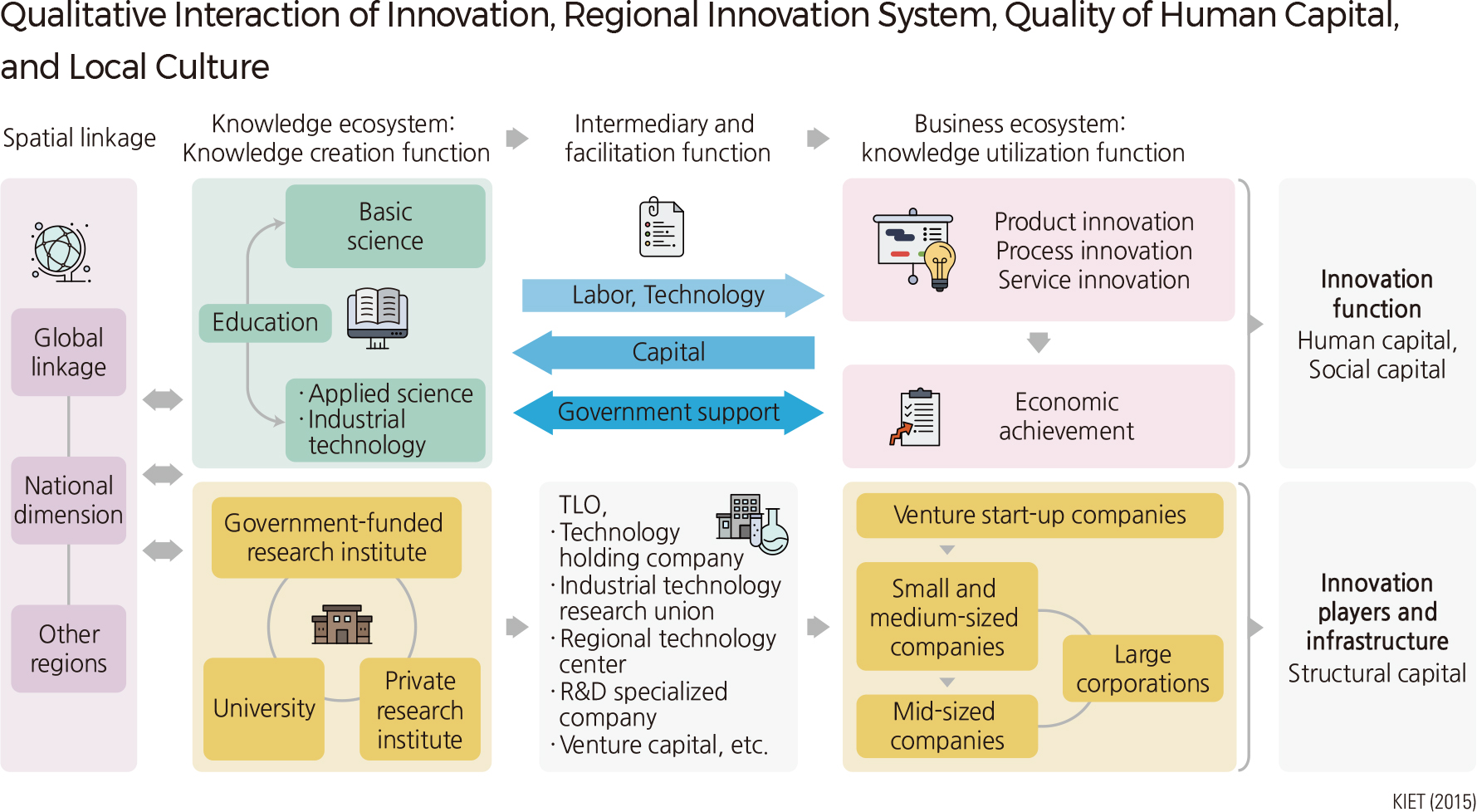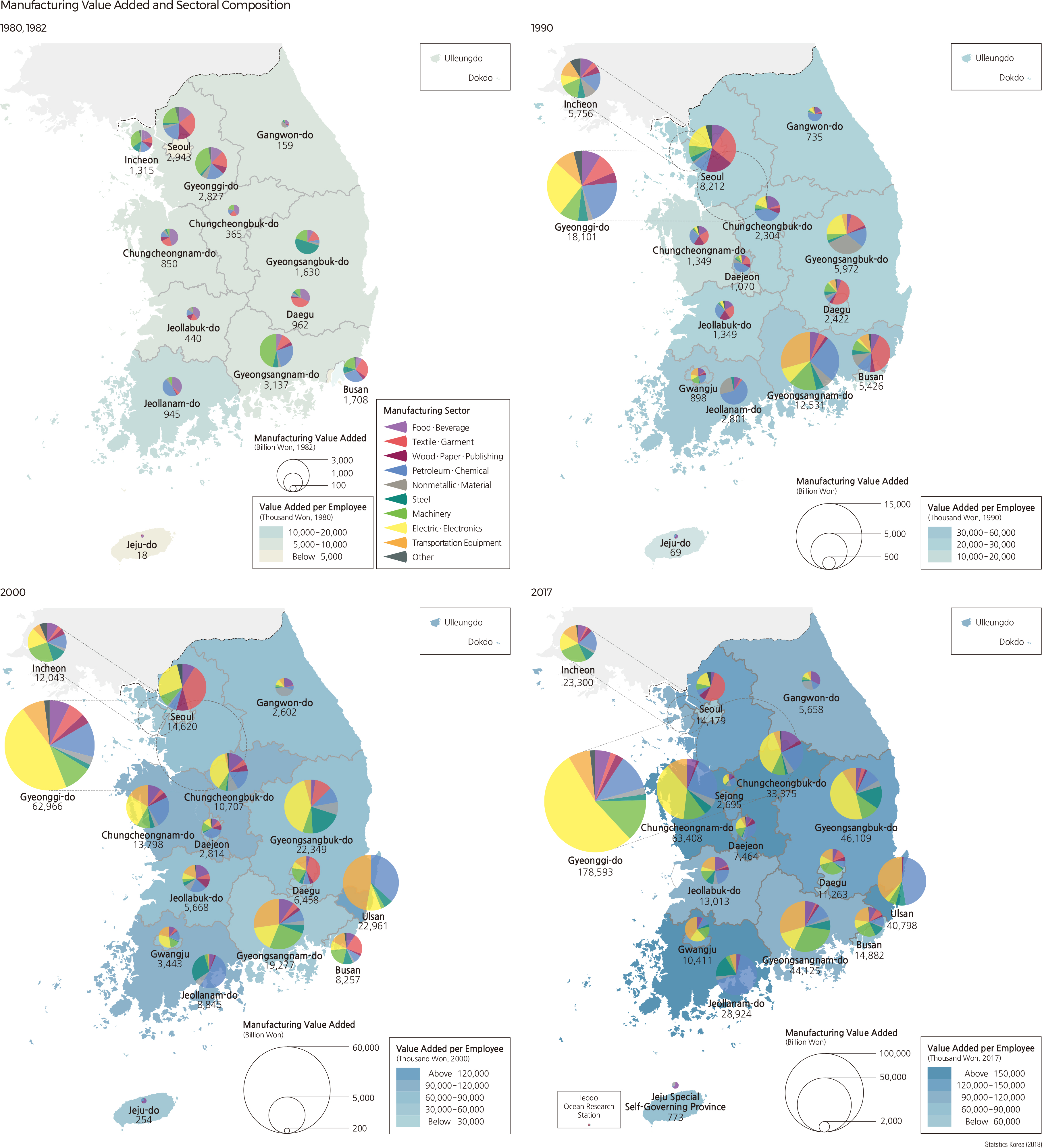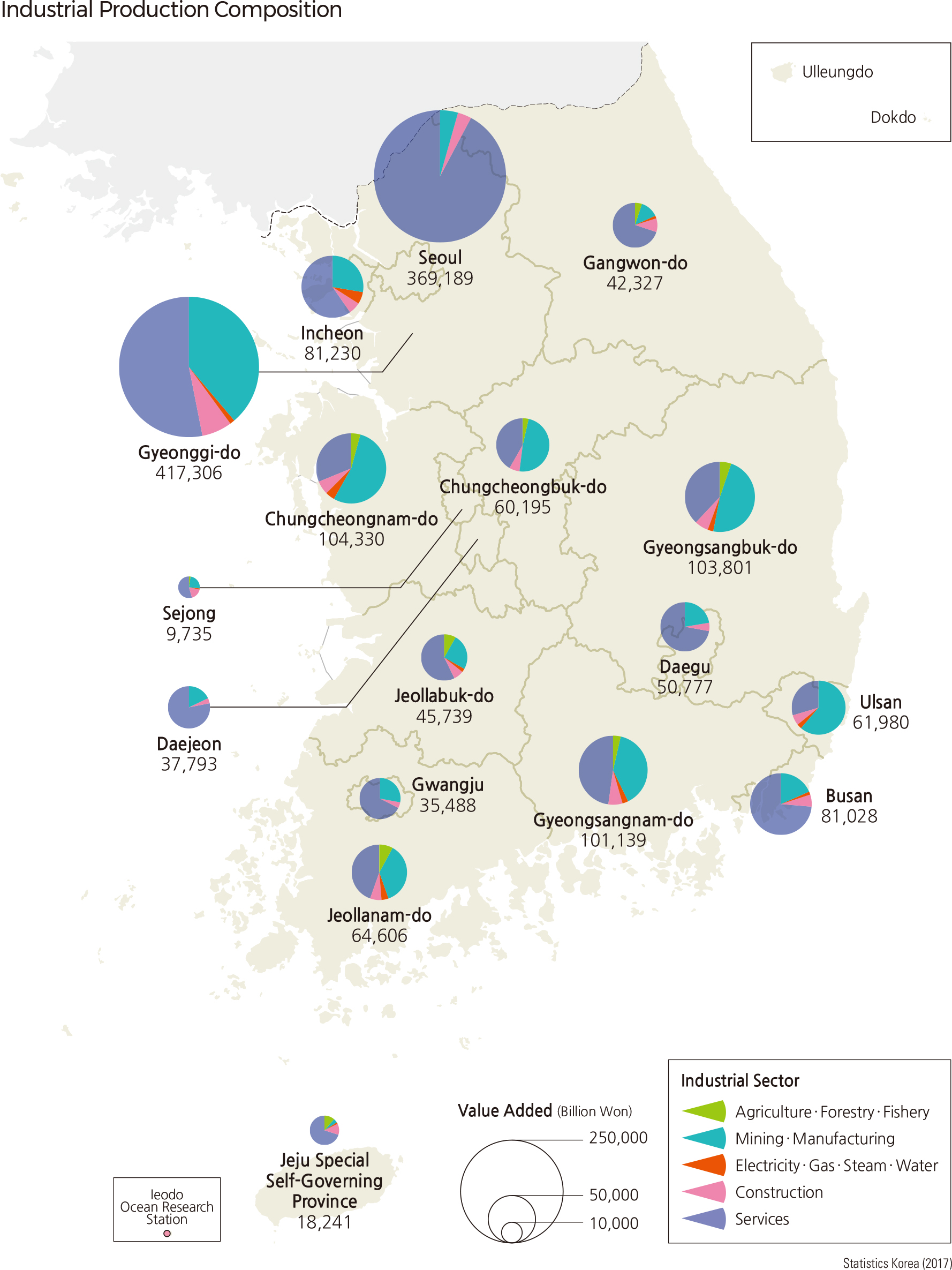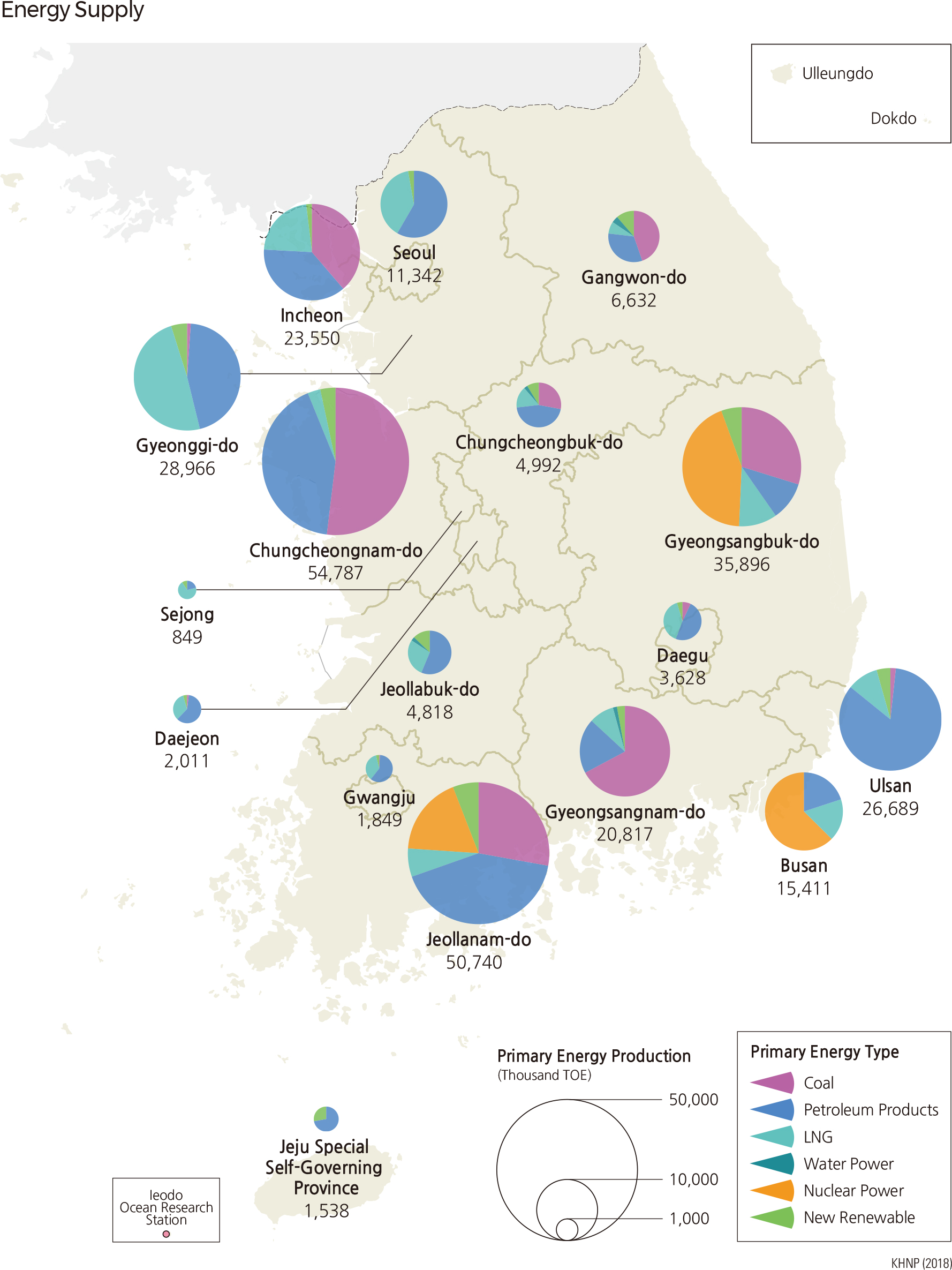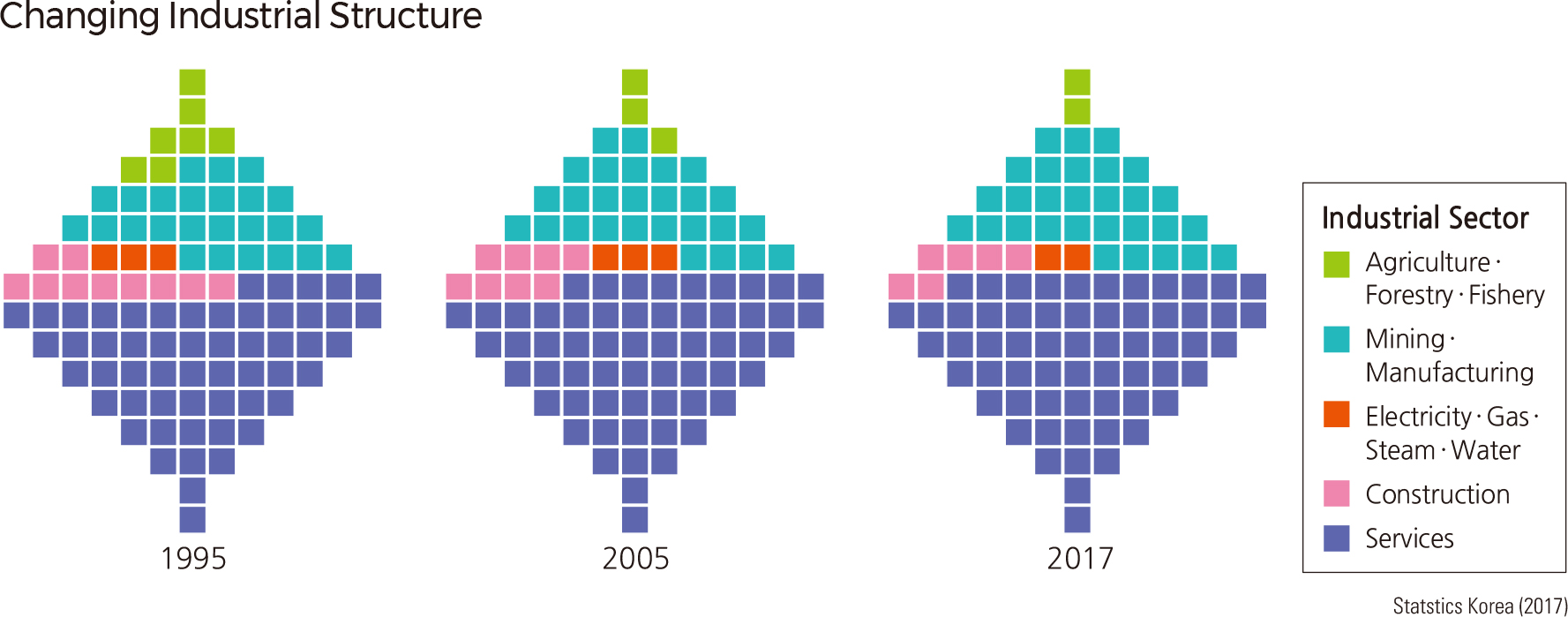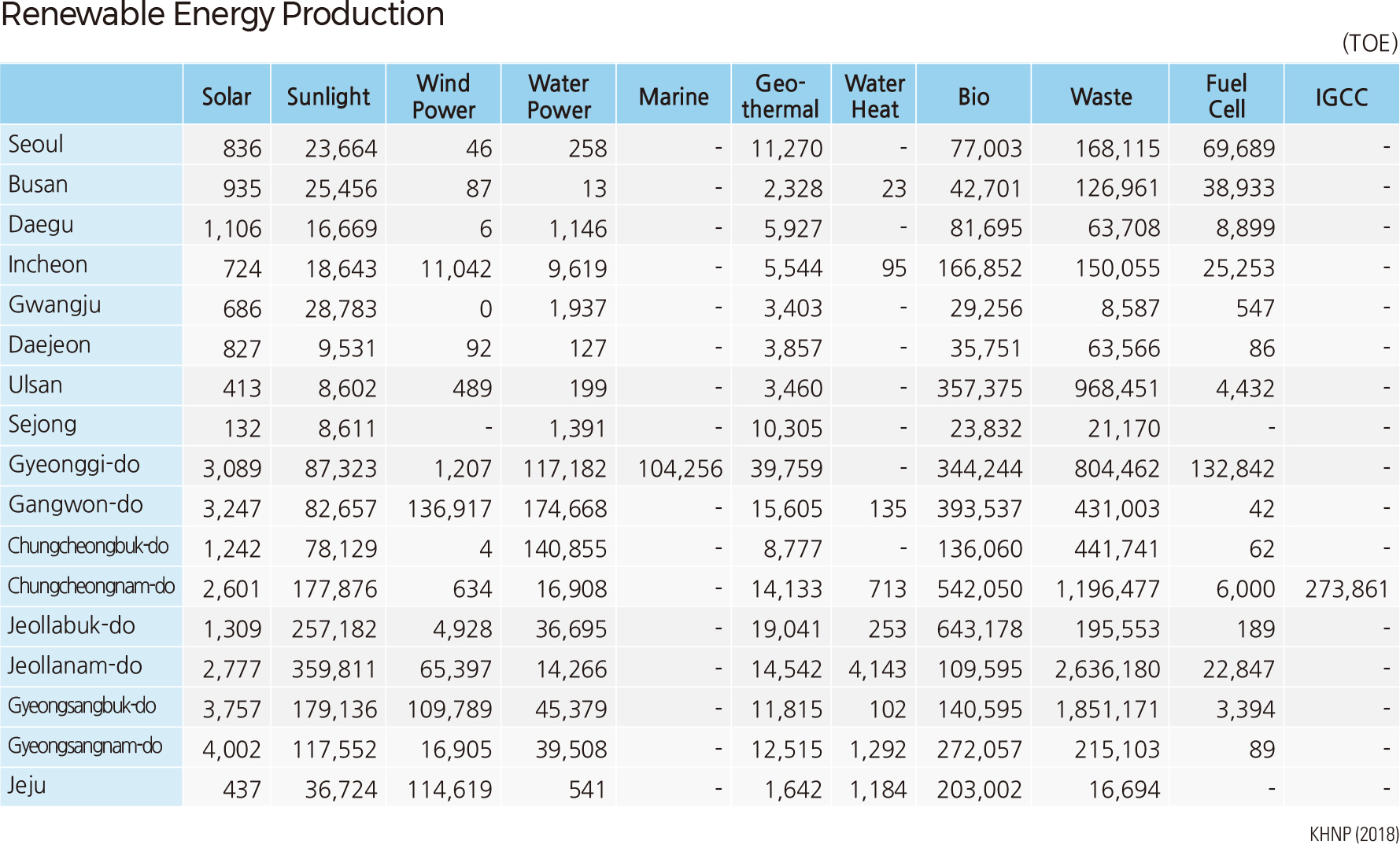English I 2019
Since the late 1990s, Korea has been intensively promoting its regional industrial policies. These regional industrial promotion policies are similar to the general regional policies, and also include both policies initiated by the central government and those created by the local governments. Recently, the participation of local self-governing bodies has increased. In particular, the targeting of a specific industry or industries has become the primary measure of a regional industrial promotion policy; in this respect, bottom-up promotion planning from local governments has become essential.
Today, regional industrial policy is at a crossroads. As global competition intensifies, local manufacturing competitiveness declines, and the production base weakens. In addition, due to the development of the Fourth Industrial Revolution, local economies with weak regional innovation foundations face an uncertain future. The Fourth Industrial Revolution will have a significant impact on local economies and industrial spaces, increasing the importance of urban spaces while reducing their reliance on traditional locational factors. In particular, local industrial cities where device-type industries are concentrated, which depend on external economic effects of geographical concentration, could face great difficulties. Above all, it is crucial to build a flexible, connected, and co-existing innovation ecosystem among local economic actors, because it is the outstanding creative talent that is important in the Fourth Industrial Revolution.
In general, regional development brings about the transformation of each region’s industrial structure. Since 1995, the industrial structures of all provinces in Korea have experienced drastic transformations. Based on the contributions of local regions, the national industrial structure also experienced remarkable changes, with a rise in the service sector and a decrease in agriculture, forestry, and fishery sectors. In particular, the ratio of the manufacturing sector is higher than that of the average of OECD countries, and the extent of spatial concentration also has increased since 1995.
Another factor that has played a role in Korea’s regional industrial growth is the increase in the number of power plants, which have, in turn, provided the energy needed for fostering further industrial activities. All 23 of the nation’s nuclear power plants concentrate spatially in three regions: Busan, Gyeongsangbuk-do, and Jeollanam-do. Thermoelectric power plants, on the other hand, show a comparatively even spatial distribution. |
